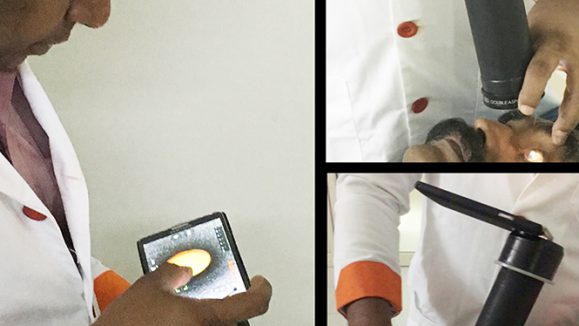- We are all familiar with recycling, but have you ever heard of upcycling?
- This process is where a recycled item is made into something better than it was in its previous life.
- Samsung is using this technique to create smartphone-based fundus imaging to be used in developing countries.
Some of the greatest discoveries you will ever make online are when you are caught in a scrolling rhythm. For example, when you start looking at one page and then click on something else, like another link in the middle or at the bottom of the page. This could be Wikipedia or maybe a news website, until suddenly you realize you have been consuming information for far longer than you previously intended.
Sometimes this can suck you in … until minutes and hours have passed, and you have been taken far away from your original subject or interest. Occasionally, you even discover information that you find interesting or useful. Like when my phone suddenly shut down, it sent this writer into a somewhat panicked scrolling meltdown — frantically trying to find somewhere I could purchase an alternative, high-quality phone quickly, and for a reasonable price.
Although my phone somehow fixed itself, by the time it did I had already gone through half of Samsung’s website until I found an entry about using the company’s Galaxy smartphones to host the EYELIKE™ Fundus Camera. The misbehaving device that caused this research now forgotten, your correspondent found himself hooked on a report about how the Korean technology giant is now partnering with the International Agency for the Prevention of Blindness (IAPB) based in London, England, and Yonsei University Health System (YUHS) in Sinchon-dong, South Korea, to “create medical devices that screen for eye disease by upcycling Galaxy smartphones that are no longer of use.” Upcycling, which is recycling an object in such a way as to create a new object of higher quality than its original intention, has become a favorite new word.
You Could Have a Fundus Imager in your Pocket Right Now

Samsung started its upcycling program in 2017 by converting older model phones to run the EYELIKE™ handheld fundus camera, which connects to a lens attachment to provide an enhanced fundus diagnosis. The host device then uses an artificial intelligence (AI) system to process the images it receives and then sends them to an app that captures patient data and suggests a plan of action if required. This means that patients in isolated locations without access to regular ophthalmological treatment can receive support at a lower overall cost.
“People around the globe face barriers to accessing fundamental health care, and we saw an opportunity to engineer smart, innovative solutions that reuse products to drive more sustainable practices and make a positive impact in our communities,” said Sung-Koo Kim, VP of Sustainability Management Office, Mobile Communications Business at Samsung Electronics. Kudos to that and the company has already brought about change in a country we know well.
According to Samsung, the company has improved the medical outcomes of 19,000 individuals in Vietnam who received access to its upcycled retina camera. In 2019, the company (in cooperation with IAPB and YUHS) reportedly supplied 90 portable ophthalmoscopes to health professionals operating in remote regions of the country without access to walk-in clinics. Samsung is now expanding this program to countries including India, Morocco and Papua New Guinea. This goes beyond just ophthalmology too, as the company is developing smartphone-based portable colposcopes to screen for cervical cancer.
Scotland: For More Than Just Irn Bru and Whiskey
“As the world recovers from the COVID-19 pandemic, it is more evident than ever that technology can be deployed as an eye health solution. In the countries where the EYELIKE Platform is tried, difficult terrain, long distances and remote populations all contribute to the need for technology to improve access to care,” said IAPB spokesperson Drew Keys. Indeed, while Samsung’s program predates the pandemic, the coronavirus has spurred the development of innovative smartphone use in ophthalmology.
For example, at the recent European Society of Cataract and Refractive Surgeons (ESCRS) Winter Meeting 2021, Dr. Iain Livingstone from NHS Forth Valley presented a report on how he and his colleagues use smartphones to offer routine exams to patients. Developed in partnership with the University of Strathclyde (Glasgow, Scotland), Dr. Livingstone is using a retinal scanner app to test for contrast sensitivity by measuring the ability of the patient to follow a moving dot on a digital screen. He reported that by doing so, the need for face-to-face consultations dropped by 86 percent.
The lesson here is not that doom scrolling can have its advantages — or that Media MICE writers should be provided with new, awesome phones (note for the editor, hint hint) — but rather that smartphones are going to be a really exciting technology in ophthalmology. If old model phones can be renewed into fundus imaging devices, imagine what technology could be unleashed on newer models. Time will tell, but this is certainly a “watch this space” moment.



